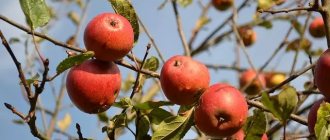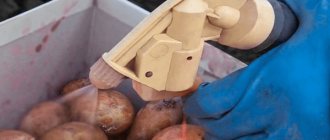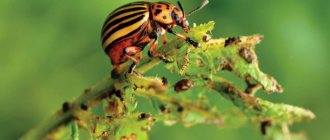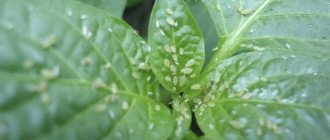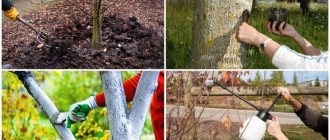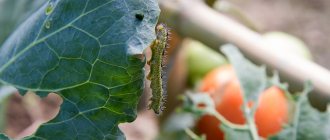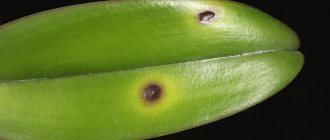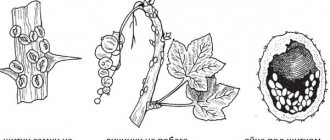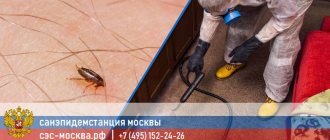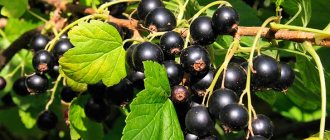Autumn is the most suitable period for preparing currants for winter. Gardeners will have to perform several procedures: protect the berry crop from insects and diseases, trim the bushes and apply fertilizer to the garden bed. How to treat currants in the fall against pests and diseases, what fertilizer to choose for the soil, what is better, folk remedies or store-bought ones? Let's look at each problem in detail.
Deadlines
Carry out autumn treatment of currants against pests and diseases in late September - early October. By this time, the fruit harvest is completed, the bushes are pruned. If you are growing a red variety of berries, wait until the leaves fall off on their own before processing. You can remove the leaves from black currants manually.
Weather conditions on a sanitary day are no less important. Choose a time when it is not very cold and dry outside. If you treat currants in the rain, the preventative agents will be washed off with water, the procedure will be absolutely useless.
Answers to frequently asked questions
To what length should shoots be trimmed in the fall?
It is necessary to trim the shoots to ground level and try not to leave stumps.
Which stage of caring for and preparing currants in the fall for winter can you skip?
When preparing for winter, it is important to remain comprehensive! All stages are equally important and have a different focus. You can only neglect insulation if the winters in your region are not too severe.
If it’s autumn with heavy rains, is it possible not to water the currants additionally before winter?
Even heavy rains do not guarantee the necessary supply of moisture for the winter. You can reduce the amount of water per plant, but do not neglect watering at all.
Is it necessary to burn fallen leaves?
It is recommended to burn the foliage if the plant is sick. Otherwise, the foliage can be sent to humus, and broken healthy branches can be used for further planting.
Autumn processing
Step-by-step treatment of currants in the fall from pests and diseases involves several agricultural procedures. This is the prevention of crop infection by diseases and the treatment of already infected units. If care is timely, regular and correct, then bushes of fragrant berries are easily protected from such troubles as:
- Powdery mildew;
- Septoria (white spot);
- Rust;
- Striped mosaic;
- Gray rot;
- Sawfly;
- Aphid;
- Spider mite;
- Whitefly;
- Leaf roller;
- Fire butterfly;
- Glassware.
For each type of parasites, infectious, fungal diseases, specific agents and chemicals are selected.
Insecticides for pests
They affect larvae and adults by contact (by contact) and aerial methods (through inhalation of toxic vapors of a chemical agent).
For autumn treatment of currants, use the following insecticides:
- Karbofos. Removes aphids, bud moths, scale insects, and ticks from the ground. Available in tablets, powder, emulsion, granules. For spraying, prepare the following solution: mix 75 g of the product with a bucket of water. For 1 bush you will need at least 1.5 liters of the prepared mixture.
- Commander. A systemic insecticide used against a wide range of insects and pests.
- Confidor. Effective against beetles and aphids. Does not accumulate in the root system or soil. The mixture for spraying is prepared in the following proportions: 5 ml of product per 6-7 liters of water.
- Actellik. Developed on the basis of pirimiphos-methyl. It enters the body of pests and disrupts the functionality of all their life systems. It works very quickly. To spray currants you need the following solution: 2 ml of product per 1.5 liters of water.
- Urea (urea). Effectively fights copperhead and aphids. Increases the yield of berry crops if used as a fertilizer. To spray bushes, 50-70 g of urea are diluted in 1 liter of water.
Insecticides for currant treatment
On a note! To avoid pest resistance (addiction), periodically change the chemicals used to treat all types of plants in the garden.
Fungicides for fungal diseases
Fungicides are special chemicals used to control fungi. Among the effective preparations for treating currants in the fall against pests and diseases are the following:
- Copper sulfate. The active metal actively affects pathogenic microorganisms immediately after entering the soil. Most effective during the active infection phase. Considered universal. Used for spraying shrubs, less often for watering. To irrigate the crop, you need to take 100 g of vitriol and dilute it in 10 liters of water.
- Burgundy liquid. Multifunctional tool. Suitable for the treatment and prevention of fungal diseases, at the same time fertilizes currant bushes with calcium. For autumn processing, you will need to dilute 40 g of dry matter in 10 liters of water. Actively spray the bushes with the resulting liquid.
- Bordeaux liquid. It is a mixture of copper sulfate and slaked lime. A 1% solution is suitable for caring for currants. The drug is effective in combating mold, gray mold, powdery mildew, rust, and spotting. The protective effect of Bordeaux mixture lasts 2 weeks, so shrubs infected with an unpleasant disease are treated twice: in autumn and spring. The dry substance for spraying is diluted in proportions of 40 g per 10 liters of water.
- Topaz. An economical and effective drug against powdery mildew. To prepare a bucket of solution you need 2 ml of product. It is important to treat all bushes, even if only one is sick. It is better to use at temperatures not lower than +4°C. Be sure to irrigate the bushes, the ground underneath them, and the fence if the bed is located directly next to the fence.
- Inkstone. It is actively used for caring for currants in the fall, if there is a risk of aphids, spider mites, sawflies, and moths settling in the garden bed with bushes. To prevent diseases, use a 1% solution, for treatment - 2.5%.
Fungicides for currant treatment
Watch a video about autumn treatment of currants from diseases and pests:
On a note! Copper sulfate should not be overused. It is poisonous to animals, plants and insects. If the concentration of the drug is exceeded, it leads to burns of the trunks and leaves of the berry crop.
Biological drugs
Proper treatment of currant bushes in the fall from pests and diseases using chemicals does not harm the berries and the garden as a whole. But many gardeners prefer to use biological agents as protection against harm. They contain living microorganisms.
All environmental products are divided into two types:
- To combat fungi - biofungicides.
- For poisoning insects - biosencticides, biocaricides, bioinsectoacaricides.
According to the advice of experienced gardeners, processing currants in the fall for winter will be more effective using the following environmental products:
- Actofit: used for the prevention of aphids and mites.
- Phytofer: fights aphids, leaf rollers, mites.
- Fitoverm: effective against felt mites, spider mites, and sawflies.
- Bitoxibacillin: kills adult insects and larvae by disrupting their intestinal functions.
- Fitosporin: helps in the treatment and prevention of rust and powdery mildew.
The effect of using biological products for berry crops occurs quickly, after 5-7 hours. The total duration of the beneficial effect is about 20 days. At the same time, the bushes, soil and environment do not suffer from harmful chemicals.
When is the best time to spray currants?
Currants are sprayed against many diseases and pests immediately after harvest, usually in July and August, in cold regions - in September. However, you should not focus on this date: currants can be sprayed throughout the fall, if conditions permit.
- There should be no wind, even weak. Otherwise, the drug will land anywhere but on currants, and then it will be easier to get poisoned.
- Fighting immediately after rain is ineffective. At this moment, there is moisture on parts of the plant, this will reduce the concentration of solutions.
- The solution should remain on the branches for at least 3 days.
Another condition is that the sun should not shine strongly, otherwise it may burn the currants. A cloudy day is ideal for the procedure.
The end of Indian summer can be a good time to carry out work: the weather is dry, the sun is sometimes hidden behind the clouds, and the wind rarely blows during this period. However, it is better to check the weather forecast rather than rely on common sense to ensure you don't miss the best time.
Newcomers can count on advice from more experienced colleagues living nearby.
Folk remedies
Currant processing in the fall can also be done using the same means that our grandmothers used. They were prepared without the use of harmful chemicals, which is important for the safety of the person who will later eat the fruits from the sprayed bushes.
Among the numerous folk recipes for treating currants against parasites and diseases, the following are considered the most effective:
- Garlic tincture An unpleasant, pungent odor repels insects, preventing them from reproducing and growing colonies. To prepare the solution, you need to crush 2 heads of garlic, add 1 liter of water at room temperature and leave in a jar with a lid for 7 days. Before use, dissolve 0.5 liters of the product in a bucket of water and spray the bushes.
- A decoction of wood ash will help with signs of powdery mildew. Take 400 g of ash, pour it into a bucket of water and boil it. Let it brew for a day and use it to spray currants.
- Celandine Kills aphids and moths. Place dry celandine grass (3 kg) in a bucket and fill with water. Leave for 2 days. Strain the mixture and use to irrigate the bushes from roots to tops.
- Laundry or tar soap The advantage of this product is its unpleasant odor. Insects avoid inhaling it, get scared and leave the inhabited area. Soap medicine is absolutely safe for plants. Prepare the solution as follows: grate a tar block on a fine grater and pour boiling water over it. Dissolve thoroughly and you can use. To enhance the effect, add mustard to the water (2-3 tablespoons per 10 liters).
- Onion A fragrant vegetable that rids currants of butterflies, aphids and mites. You need to prepare medicine only from the husk. Take 200 g of dry onion peel and pour boiling water (10 l). Leave for several hours or overnight. Treat the root part of the crop and shoots with the product. Pour the remaining solution into the soil, under the roots.
- Tobacco dust A foul-smelling product repels all pests. Buy tobacco dust at the store or prepare it from shag leaves: dry and grind. Then pour 400 g of the product into a bucket of warm water and leave for a day. Use the prepared infusion for a short time, otherwise the medicine will lose its beneficial properties. Tobacco dust can be used twice: in early spring and before winter.
Folk remedies act on insects and plants slowly, so you should not expect instant results. But after using ash, soap, onions, and garlic, your garden will definitely be safe.
Currant glass
This lepidopteran equally affects both black, red and white currants. An adult insect is an elegant butterfly with a transparent narrow wingspan of up to 2.5 cm. Its abdomen is black with thin yellow rings, and at the end of the abdomen there is a tassel of black hairs. Glass larvae are white with a dark brown head, up to 3 cm long.
The larvae live inside currant shoots, feeding and gnawing long vertical wormholes (up to 30-40 cm) in them, as a result of which the branches stop growing and quickly wither and dry out along with the leaves and ovaries. Caterpillars pupate in the spring (in the same place, inside the shoots); towards the end of flowering, glass butterflies emerge from the pupae, laying eggs near the buds - the year lasts about a month and a half. New caterpillars hatched after 10-14 days and again penetrate inside the shoots. In autumn, when the temperature drops, the caterpillars stop feeding and remain overwintering in the plant. The development of one generation of glass is completed in 1-2 years.
During years of intensive reproduction, the pest can damage up to half of all currant shoots.
Prevention
Currants are a vulnerable crop, often affected by fungal diseases, infections, and destroyed by insects. Preventive measures help keep the berry crop healthy and strong, and this guarantees a rich harvest. The list of necessary procedures looks like this:
- Pruning bushes in autumn;
- Renewal of seedlings every 4-6 years;
- Plant staking;
- Mulching the soil, loosening;
- Fertilization with fertilizers;
- Treating bushes against parasites and diseases at least 2 times a year: in spring and autumn;
- Periodic inspection of bushes for timely detection of possible diseases;
- Thorough cleaning of the area, burning of fallen leaves.
On a note! You should also be careful about the garden tools used for pruning shrubs. Before use, wipe scissors and pruning shears with alcohol.
Caring for currants in 2022 according to the lunar calendar
Procedures for caring for and preparing currants for winter in the fall should begin after the bush begins to shed its leaves.
This will be affected by the climate in your region. To carry out formative and rejuvenating pruning, it is recommended to choose days when the moon is waning, or when the Moon is in fertile zodiac signs:
- September 1, 6, 15-16, 26-28;
- October 2, 3, 8, 12, 15, 25, 29-31;
- November 9, 10, 25-28.
The days of the new moon and full moon are considered especially unfavorable.
If you decide to start replanting old bushes and planting new ones in the fall of 2022, then these days according to the lunar calendar will be the most favorable:
- September 1, 5-6, 18-19, 27-29;
- October 2-3, 29-30;
- November 25-26.
Feeding and fertilizing
Thanks to fertilizing the soil under currant bushes and fertilizing, the berry crop becomes more resistant to infections and parasites. In autumn, saturate the soil with the following mineral and organic elements:
- Phosphorus and potassium. Place 1 tbsp under the bushes. chlorine-free potassium and superphosphate. Then water the bed with warm water. It is correct to carry out such agricultural procedures once every 2 years.
- Saltpeter. You can feed currants with saltpeter in the fall only in late August - early September. Apply 15 g per 1 m², without exceeding the dose, so as not to burn the root system of the shrubs.
- Manure. It needs to be added to the soil once every 3-5 years. Mullein retains moisture in the soil and activates photosynthesis. For 1 bush you will need 10 liters of rotted manure diluted with 10 liters of water.
- Compost. Prepare in advance by throwing leaves and grass into the hole. Mulch the soil under the bushes no earlier than November, since this fertilizer will take 2-4 months to decompose.
Gardeners usually get organic matter for free, so in the fall you can spend a little on complex store-bought fertilizers. The preparation “Autumn” is well suited for currants. It is diluted with water according to the instructions and watered the bed with seedlings.
Pest and disease control. Treatment of currant bushes in spring and autumn.
Healthy currant bushes are the key to a healthy harvest.
Pest control is mandatory, not only in early spring but also in autumn. They mainly use Bordeaux mixture, karbofos or other drugs.
To prevent diseases and the appearance of pests, the bush must be sprayed with 1% Bordeaux mixture or (Topaz, Fundazol). The procedure is carried out monthly.
After the fruits ripen and are harvested, dry branches and leaves can be seen. These are signs of glassworm infestation.
It is recommended to immediately remove infected branches to prevent the pest from reaching the base of the bush. The following drugs are suitable for treatment: Lepidocid, Karbofos, Antonem, Nemabakt-F, Fufafon, Kinmiks.
Trimming
When pruning currant bushes in autumn, be sure to get rid of:
- Young shoots that greatly thicken the bed.
- Barren branches.
- Sick and withered branches. Remove them at the root and burn the cuttings.
- Thin, weakened shoots.
You need to cut the branches with perfectly even scissors, starting from the center of the bush. You cannot remove too many shoots at one time, as this will greatly weaken the culture. Make the cuts above the outer bud (1 cm). Prescribe the sanitary procedure for October-November, before the first frost.
You need to take care of the berry crop regularly; it does not tolerate neglect. Knowing how to process currants in the fall, and applying the information received in practice, you can provide yourself and your family with a rich harvest of berries in the summer, and make a variety of desserts for the winter.
Common mistakes
Common maintenance mistakes include the use of nitrogen fertilizers in the autumn season. This is wrong, since this type of fertilizer promotes the growth of green mass, which slows down the preparation of currants for winter. For the same reason, it is not recommended to add excessively large doses of organic fertilizers: 4-6 kg are needed per bush.
Polyethylene cannot be used as insulation, as it does not allow air to pass through.
When pruning, do not use blunt tools or try to break off branches to be pruned with your hands. This has an extremely negative impact on the health of the entire bush. Use the necessary well-sharpened tools.
Currant leafroller
Although this butterfly is called currant, with equal success it damages the leaves of other crops - both garden fruits and berries, and wild ones.
An adult insect is a butterfly with a yellowish-brown wingspan with dark spots up to 2.5 cm, males are smaller and lighter than females. The larvae of the first and second generations are brown-green with a black head, the next generations are yellow-green with a light abdomen and a brown head, reaching a size of 2 cm.
The flight of the first generation butterflies is observed approximately two weeks after the end of flowering of the apple tree and lasts 3–4 weeks. One female lays up to 200 yellowish-green eggs in 2–4 clutches in “packs” on the upper part of the leaf blade.
The first generation larva skeletonizes the leaf blades and damages the fruits, gnawing out individual holes in them, covered by a leaf attached to the fruit with a silk web, and causing them to rot. When they reach the third instar, most of the caterpillars go to winter - they can be found in dense silky cocoons in the forks of branches, at the base of the buds, under bark scales and dry leaves, attached by cobwebs to the branches. The remaining caterpillars continue to feed and pupate, subsequently turning into second-generation butterflies.
The second generation caterpillars go to winter at the end of September. The larvae emerge from wintering at the end of April, when the buds begin to bloom. At this time, they feed on young leaves, buds and flowers, while loosely entwining them with cobwebs and pulling them into clumps. They also damage fruit ovaries by gnawing holes in them.
Due to the presence of two generations and the length of summer, adult butterflies of this species are found almost throughout the entire summer period.
In addition to the currant budworm, currants with similar symptoms are also affected by the grape and bunch budrollers.
Gooseberry moth
This motley butterfly is also a serious pest of all types of currants - with a serious infection it can reduce the harvest by more than half. An adult insect has a grey-brown striped wingspan of about 3 cm, yellowish-green caterpillars with a black head are three times smaller.
The flight of adult butterflies begins in the spring, when buds appear on the earliest varieties of berry bushes, and continues throughout the flowering period. Female moths lay hundreds of eggs inside flowers and later on the ovary. The caterpillars that hatch a week later feed on the insides of flower buds, as well as the seeds and pulp of ripening berries (during the period of its development, one such caterpillar can destroy up to 15 currant berries). Moving around the plant, the caterpillars entwine it with cobwebs - this sign makes it easy to identify the pest. And also by the abundance of prematurely ripening, drying and falling berries. By mid-summer, the caterpillars descend into the soil and pupate at the base of the bush, becoming covered with a dense gray cocoon, where they overwinter. During the entire season, only one generation of moth develops.
Redcurrant gall (leaf, bladder) aphid
Despite the name, redcurrant aphids attack all types of this shrub, although they prefer white- and red-fruited varieties. Adults are mostly wingless, have a yellowish body about 2 mm long, larvae are the same color.
The second name for this leaf aphid is bladder or gall aphid, due to the fact that damaged young currant leaves are covered on the underside with dark red or yellow bladder tumors (galls). Subsequently, such damaged leaves dry out and fall off. Adult, hardened leaves that have finished growing suffer slightly from bladder aphids.
It is in the galls that aphid larvae grow, feed and develop; during the blooming of currant leaves, they hatch from eggs hibernating on the branches in cracks in the bark. Adult insects appear during mass flowering of berry bushes and begin to lay eggs again.
During the growing season, up to 6-7 generations of gall aphids can develop on currants. At the same time, some of the females acquire wings and move from currant bushes to herbaceous plants of the Lamiaceae family, where they continue to reproduce. In autumn, aphids return to currants to lay overwintering eggs. All other individuals die when the temperature drops in the autumn.
In addition to actually damaging plants, aphids are also dangerous because they transmit dangerous viral diseases of currants.
